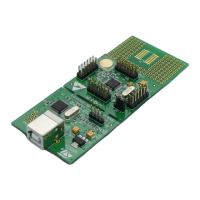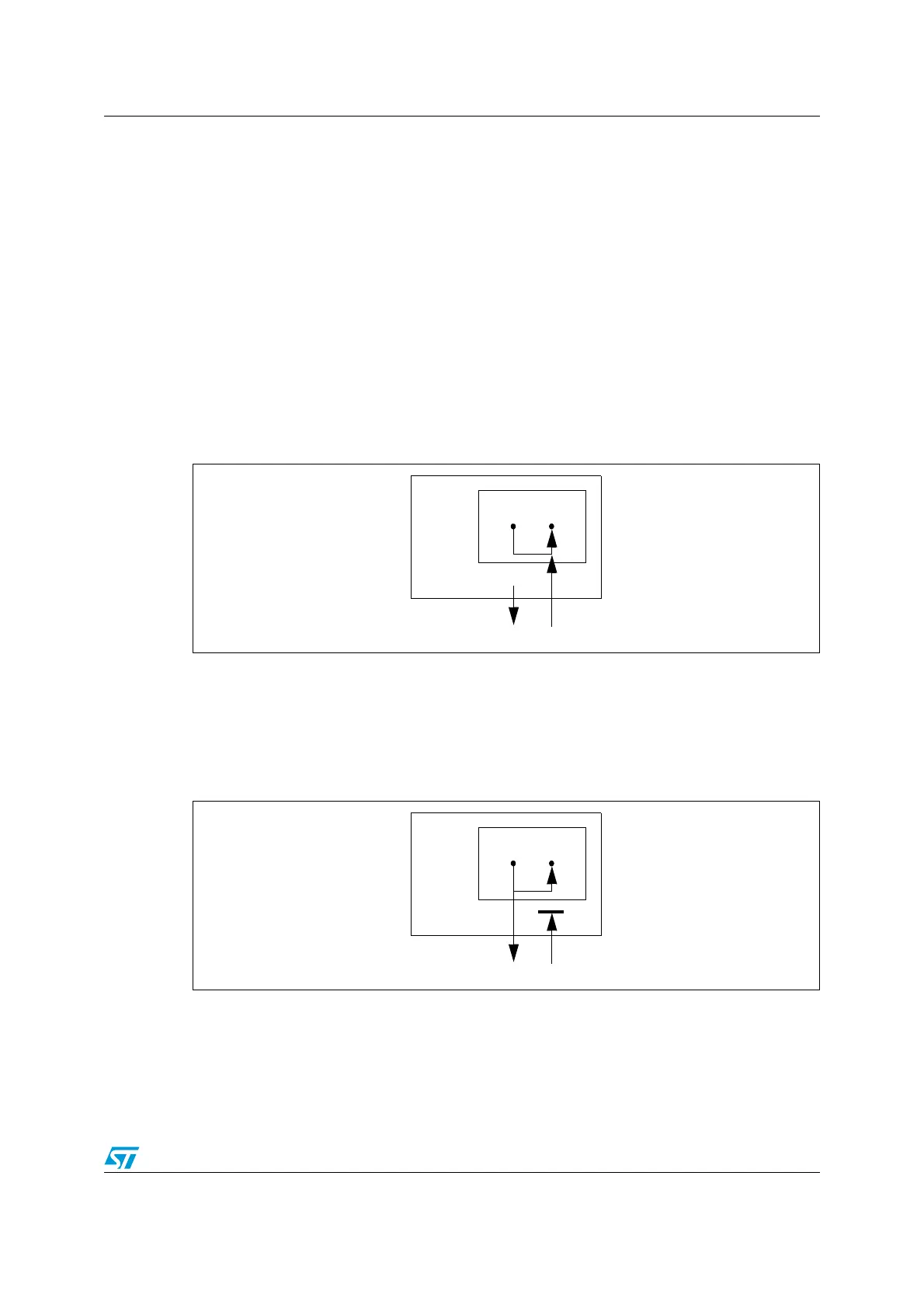RM0016 Controller area network (beCAN)
Doc ID 14587 Rev 8 367/449
23.5 Test modes
Test modes can be selected by the SILM and LBKM bits in the CAN_DGR register. These
bits must be configured while beCAN is in Initialization mode. Once a test mode has been
selected, the INRQ bit in the CAN_MCR register must be reset to enter Normal mode.
23.5.1 Silent mode
The beCAN can be put in Silent mode by setting the SILM bit in the CAN_DGR register.
In Silent mode, the beCAN is able to receive valid data frames and valid remote frames, but
it sends only recessive bits on the CAN bus and it cannot start a transmission. If the beCAN
has to send a dominant bit (ACK bit, overload flag, active error flag), the bit is rerouted
internally so that the CAN Core monitors this dominant bit, although the CAN bus may
remain in recessive state. Silent mode can be used to analyze the traffic on a CAN bus
without affecting it by the transmission of dominant bits (Acknowledge Bits, Error Frames).
Figure 142. beCAN in silent mode
23.5.2 Loop back mode
The beCAN can be set in Loop Back Mode by setting the LBKM bit in the CAN_DGR
register. In Loop Back Mode, the beCAN treats its own transmitted messages as received
messages and stores them (if they pass acceptance filtering) in the FIFO.
Figure 143. beCAN in loop back mode
This mode is provided for self-test functions. To be independent of external events, the CAN
Core ignores acknowledge errors (no dominant bit sampled in the acknowledge slot of a
data / remote frame) in Loop Back Mode. In this mode, the beCAN performs an internal
feedback from its Tx output to its Rx input. The actual value of the CANRX input pin is
disregarded by the beCAN. The transmitted messages can be monitored on the CANTX pin.

